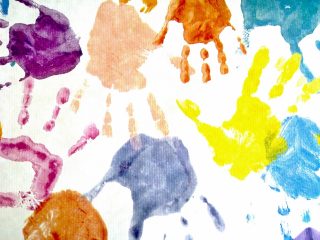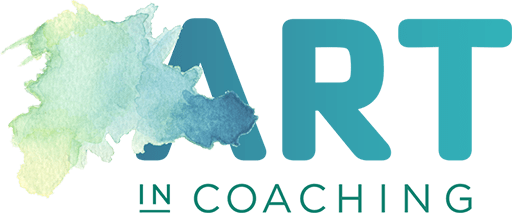One of the most frequent questions I get asked about using art in group coaching, is how to introduce it.
In this blog, I look at the different approaches you can take to introducing art into group coaching, and what to consider when choosing the most appropriate approach for your group and your group coaching session.
Different approaches to introducing art
The way art is introduced in to groups will depend on the type of group you are working with, the coaching theme or themes you are working on together and what your contracting process has been. There may be certain groups where art is not an appropriate way of working with them, and there may also be coaching themes where art is not the right coaching approach. It is only through getting to know the group members, using your knowledge as a coach, and your intuition, that you will be able to determine whether to bring art into the group coaching programme. You will have a feel for it plus, if you think it would be a good approach, exploring the idea of using art with the group, explaining what is involved it and the process, will also give you clues as to how to start to introduce it.
Ways to introduce art exercises
If you want to bring art-based coaching into the group, there are four approaches you could take:
Approach 1 – Introduce an exercise, explaining what to do, and then immediately invite people to create their images,
Approach 2 – Introduce an exercise and then, before making their art, encourage people to take a moment to reflect on what image they would like to create,
Approach 3 – Introduce an exercise and then, before creating their art, do a short visualisation exercise to help people come up with an image that feels right for them, or
Approach 4 – Introduce an exercise and then take everyone through the longer imaging process, slowing the pace down with a meditative, mindful exercise to allow images to emerge to their mind’s eye, before inviting them to create their emergent image.

Choosing an approach
All the above approaches to introducing art are valid, and choosing which to use will again be dependent on the nature of the group, where they are in their developmental life cycle and the coaching programme’s theme and the area of focus for the session.
When deciding which approach may be appropriate, consider the following thoughts and questions:
- Contracting – What have you contracted for with the group in terms of art-based coaching? What have you discussed and agreed with them about using art in their coaching programme?
- Sharing – What have you agreed about sharing their images and the process for connecting to the meanings and insights that may be within them?
- Safe space – Where is the group in their developmental cycle? Are they just starting out together and building trust or have they been together for a while and feel comfortable and confident with each other?
- Purpose – What is the purpose of the exercise in relation to the group’s theme or that particular session’s theme? What outcome does the group want to achieve?
- Time – How much time do you have for everyone to talk to their images?
Each time you introduce an art-based exercise a different approach may be appropriate. For example, groups who are just forming, building trust and, at a personal level, building confidence in the art-based process, you may want to start with approaches 1 and 2. Here art-based exercises may be lighter and more superficial and used as a means for people to familiarise themselves with materials, or create images as talking points such as introducing and sharing something about themselves.
For groups that are further developed and feel more confident with the process, approaches 3 and 4 may be appropriate, particularly where the group is ready to connect at a deeper level around the coaching theme(s), and trusts the space to allow for deeper connections to be shared.
Time is also an important factor in choosing an approach. When time is an issue, it will be faster to work with approaches 1 and 2 than approaches 3 and 4. The compromise here is the potential for images to be representative of thoughts and more superficial. This is fine if the exercise is meant to be a lighter exercise and/or where you want people to work in pairs or smaller groups to talk about their images. However, encouraging people to work with their intuition, allowing their image to emerge as they create it, and not being wedded to an initial idea, can lead images created with approaches 1 and 2 to offer more insight than you may otherwise imagine.
I hope the above has answered some of your questions around introducing art in group coaching and if you would like to explore art in group coaching more, why not join the upcoming online ART in Group Coaching programme.


